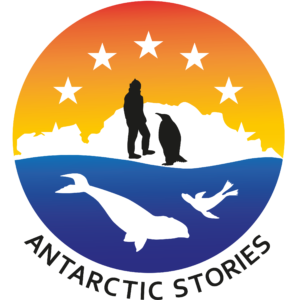Antarctica is encircled by the vast Southern Ocean whose waters extend to the southern most parts of the Pacific, the Atlantic and Indian oceans. On the map, it may appear that this great ocean is merely a continuation of the more northerly seas. But it is a distinct and remarkable body of water. Sea travellers are well-aware of its ‘borders’. The first of these, the Subtropical Front, is found at around 40° S where warm, salty subtropical waters give way to the cooler, less salty seas of the sub-Antarctic seas.
Between the latitudes of 50° S and 60° S, water temperatures drop by a further 5 – 9° C as the seas approach the Antarctic Convergence. This second ‘border’ is famous for the Antarctic Circumpolar Current (ACC), the world’s largest ocean current, which flows from west to east around Antarctica. This massive current is about 150 times greater than the flow of all the world’s rivers combined.
Cold and ice give rise to rich life
At these latitudes, the cold Antarctic surface waters descend to depths of up to 3000 m. But as the waters descend, nutrients well-up from the deep, giving rise to an extraordinary wealth of life – far richer than anything found in tropical waters.
Indeed, the Southern Ocean is one of the most biologically abundant on earth. Its cold, nutrient-filled waters support huge quantities of phytoplankton (algae) and zooplankton. These include tiny crustaceans called copepods and Antarctic krill (which may be the largest animal biomass on the planet). Together, they form the basis of food chains that nourish populations of fish, whales, seals, penguins and sea birds such as the iconic albatross.
Sea ice is crucial to these cycles of life. In the long polar night, the algae and krill hide beneath the ice or are frozen within it. When the sunlight returns, the algae float free providing a vast food source for the krill, so bringing sustenance to all the Southern Ocean’s creatures.
Extraordinary ecosystems under threat
What’s more, as scientists begin to explore the deep ocean floor around Antarctic, they are finding extraordinary ecosystems and previously unknown organisms. From giant worms to voracious sea stars, the diversity of forms and colours in the dark depths is truly astonishing.
However, this abundant life is threatened by climate change and reductions in sea ice. For instance, recent research suggests that the biomass of krill is declining due to warming temperatures and fishing. This in turn is causing a drop in penguin populations. The rich yet sensitive ecosystems of the Southern Ocean are a clear indicator of the impact of human activity even on our planet’s most inaccessible regions.


